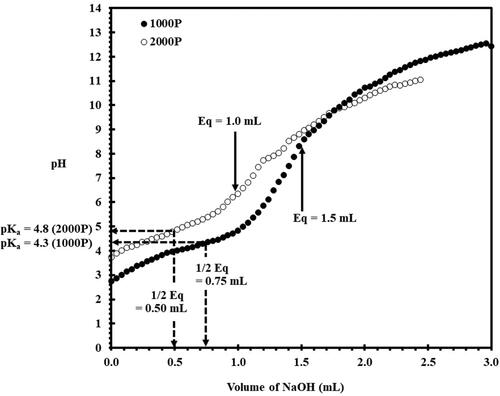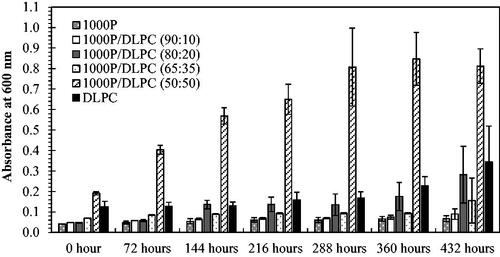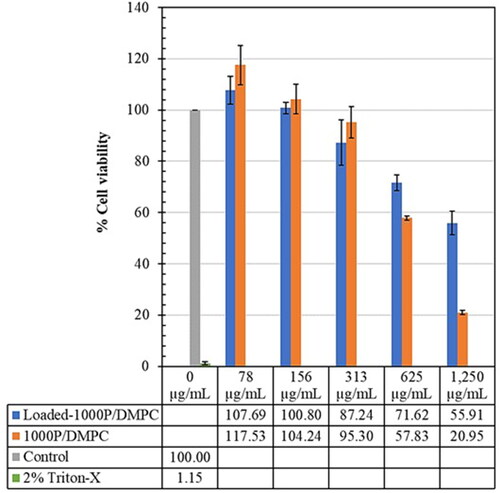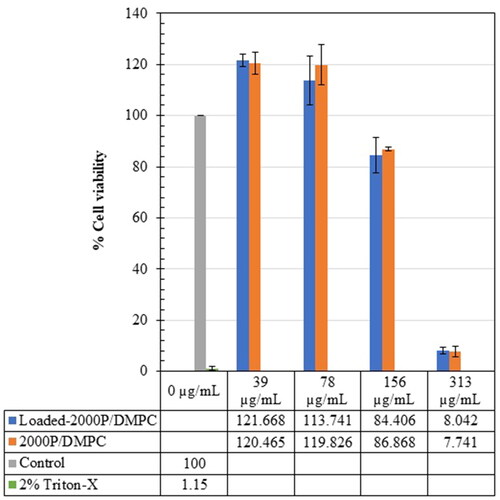Figures & data
Figure 2. Schematic representation of a mixed PSMA/lipid nanostructure (Paint 3D:6.2003.4017, Microsoft Corporation, 2016).
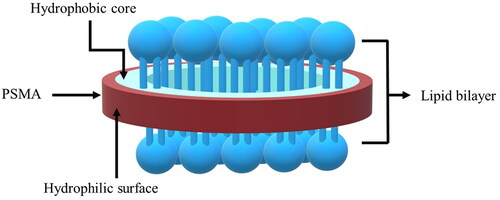
Figure 3. Schematic diagram for the preparation of propolis-loaded PSMA/PC nanoparticles (Paint 3D:6.2003.4017, Microsoft Corporation, 2016).
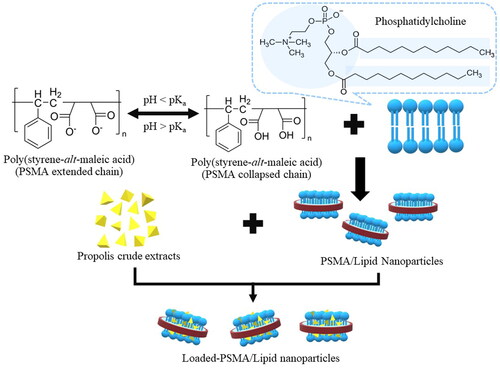
Figure 7. The changes of the averaged UV-absorbance (600 nm) as a function of time for different PSMA/DMPC (90:10) formulations. Results for the aqueous solutions of DMPC and PSMA (1000 P or 2000 P type) are also plotted for comparison.
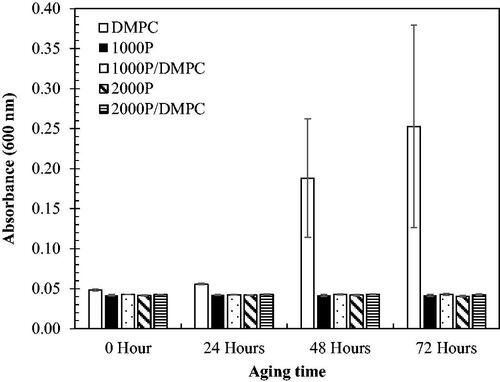
Figure 8. Particle size distribution plots (top) and correlation plots (bottom) of hydrated DMPC (solid blue), 1000 P/DMPC (solid black), and 2000 P/DMPC (solid red) particles. The changes in the DLS profiles after a short-term storage (15 min) were also demonstrated for each sample (dashed lines).
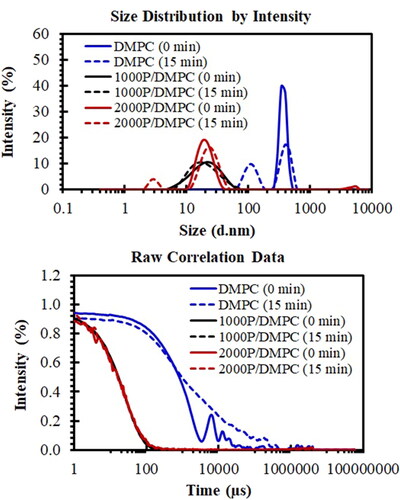
Figure 9. SEM images of DMPC vesicles (a–b) and the PSMA/DMPC particles. Image of (a), (b–d), (e) and (f) were taken at the magnifications of ×500, ×50,000, ×10,000 and ×30,000, respectively.

Figure 10. Size distribution plots (top) and correlation plots (bottom) of the loaded-particles of 1000 P/DMPC (solid blue) and 2000 P/DMPC (solid red) in comparison to their corresponding unloaded particles. The changes in the distribution profiles for the loaded-1000P/DMPC (dashed blue) and loaded-2000P/DMPC (dashed red) after a short-term storage (15 min) were also demonstrated (dashed lines).
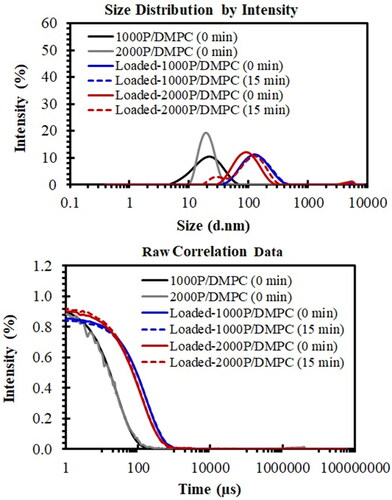
Table 1. Encapsulation efficiency (EE%) of different PSMA/DMPC systems.
Data availability statement
The authors confirm that the data supporting the findings of this study are available within the article.


